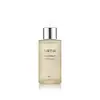What's inside
What's inside
 Key Ingredients
Key Ingredients

 Benefits
Benefits

 Concerns
Concerns

 Ingredients Side-by-side
Ingredients Side-by-side

Water
Skin ConditioningDipropylene Glycol
HumectantGlycerin
HumectantHamamelis Virginiana Extract
AntiseborrhoeicButylene Glycol
HumectantArginine
MaskingCarbomer
Emulsion StabilisingCaprylyl Glycol
EmollientBetaine
HumectantAllantoin
Skin ConditioningPanthenol
Skin ConditioningCamellia Sinensis Leaf Extract
AntimicrobialRosmarinus Officinalis Leaf Extract
AntimicrobialChamomilla Recutita Flower Extract
MaskingCentella Asiatica Extract
CleansingGlycyrrhiza Glabra Root Extract
BleachingAdenosine
Skin ConditioningDisodium EDTA
Polygonum Cuspidatum Root Extract
AntioxidantScutellaria Baicalensis Root Extract
AstringentIllicium Verum Fruit Extract
PerfumingSodium Hyaluronate
HumectantPolyglutamic Acid
Skin ConditioningNatto Gum
Copper Tripeptide-1
Skin ConditioningAcetyl Hexapeptide-8
HumectantPalmitoyl Pentapeptide-4
Skin ConditioningWater, Dipropylene Glycol, Glycerin, Hamamelis Virginiana Extract, Butylene Glycol, Arginine, Carbomer, Caprylyl Glycol, Betaine, Allantoin, Panthenol, Camellia Sinensis Leaf Extract, Rosmarinus Officinalis Leaf Extract, Chamomilla Recutita Flower Extract, Centella Asiatica Extract, Glycyrrhiza Glabra Root Extract, Adenosine, Disodium EDTA, Polygonum Cuspidatum Root Extract, Scutellaria Baicalensis Root Extract, Illicium Verum Fruit Extract, Sodium Hyaluronate, Polyglutamic Acid, Natto Gum, Copper Tripeptide-1, Acetyl Hexapeptide-8, Palmitoyl Pentapeptide-4
Water
Skin ConditioningRosa Damascena Flower Water
MaskingCoco-Caprylate/Caprate
EmollientC9-12 Alkane
SolventPropanediol
SolventEthylhexyl Palmitate
EmollientPentylene Glycol
Skin ConditioningGlycerin
HumectantSqualane
EmollientRosa Damascena Flower Extract
MaskingRosa Damascena Extract
MaskingCamelina Sativa Seed Oil
Skin ConditioningRosa Rubiginosa Seed Oil
EmollientCucumis Sativus Fruit Extract
EmollientRosa Damascena Flower Oil
MaskingTocopherol
AntioxidantSodium Citrate
BufferingSodium Chloride
MaskingEthylhexylglycerin
Skin ConditioningXanthan Gum
EmulsifyingCitric Acid
BufferingCaprylic/Capric Triglyceride
MaskingSorbitan Sesquioleate
Emulsifying1,2-Hexanediol
Skin ConditioningCaprylyl Glycol
EmollientSodium Benzoate
MaskingPotassium Sorbate
PreservativeCitronellol
PerfumingGeraniol
PerfumingWater, Rosa Damascena Flower Water, Coco-Caprylate/Caprate, C9-12 Alkane, Propanediol, Ethylhexyl Palmitate, Pentylene Glycol, Glycerin, Squalane, Rosa Damascena Flower Extract, Rosa Damascena Extract, Camelina Sativa Seed Oil, Rosa Rubiginosa Seed Oil, Cucumis Sativus Fruit Extract, Rosa Damascena Flower Oil, Tocopherol, Sodium Citrate, Sodium Chloride, Ethylhexylglycerin, Xanthan Gum, Citric Acid, Caprylic/Capric Triglyceride, Sorbitan Sesquioleate, 1,2-Hexanediol, Caprylyl Glycol, Sodium Benzoate, Potassium Sorbate, Citronellol, Geraniol
 Reviews
Reviews

Ingredients Explained
These ingredients are found in both products.
Ingredients higher up in an ingredient list are typically present in a larger amount.
Caprylyl Glycol is a humectant and emollient, meaning it attracts and preserves moisture.
It is a common ingredient in many products, especially those designed to hydrate skin. The primary benefits are retaining moisture, skin softening, and promoting a healthy skin barrier.
Though Caprylyl Glycol is an alcohol derived from fatty acids, it is not the kind that can dry out skin.
This ingredient is also used as a preservative to extend the life of products. It has slight antimicrobial properties.
Learn more about Caprylyl GlycolGlycerin is already naturally found in your skin. It helps moisturize and protect your skin.
A study from 2016 found glycerin to be more effective as a humectant than AHAs and hyaluronic acid.
As a humectant, it helps the skin stay hydrated by pulling moisture to your skin. The low molecular weight of glycerin allows it to pull moisture into the deeper layers of your skin.
Hydrated skin improves your skin barrier; Your skin barrier helps protect against irritants and bacteria.
Glycerin has also been found to have antimicrobial and antiviral properties. Due to these properties, glycerin is often used in wound and burn treatments.
In cosmetics, glycerin is usually derived from plants such as soybean or palm. However, it can also be sourced from animals, such as tallow or animal fat.
This ingredient is organic, colorless, odorless, and non-toxic.
Glycerin is the name for this ingredient in American English. British English uses Glycerol/Glycerine.
Learn more about GlycerinWater. It's the most common cosmetic ingredient of all. You'll usually see it at the top of ingredient lists, meaning that it makes up the largest part of the product.
So why is it so popular? Water most often acts as a solvent - this means that it helps dissolve other ingredients into the formulation.
You'll also recognize water as that liquid we all need to stay alive. If you see this, drink a glass of water. Stay hydrated!
Learn more about Water